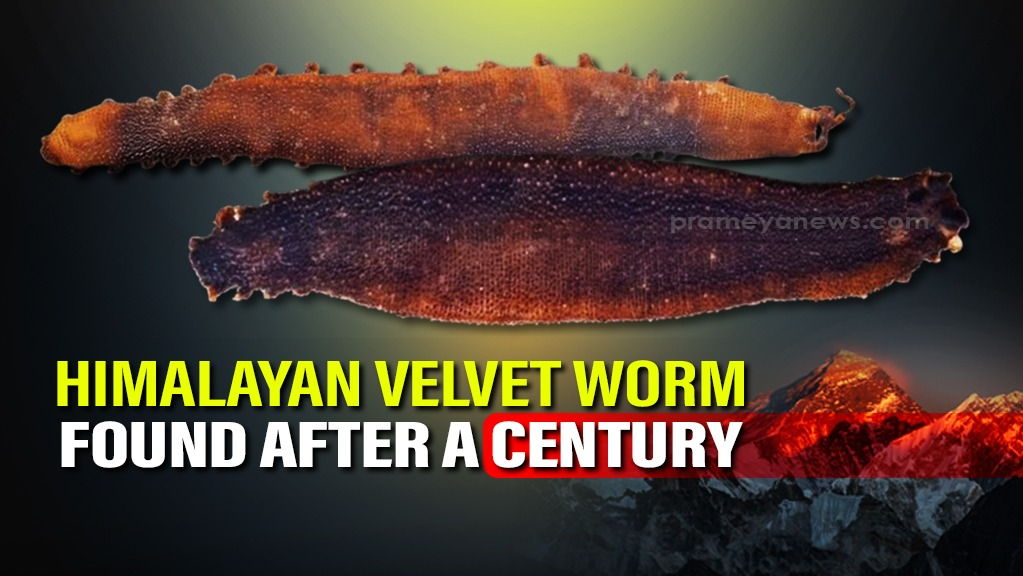Rare Himalayan Velvet Worm Reappears After a century
In the remote Siang Valley of Arunachal Pradesh, a creature unseen by scientists for over a century has made a remarkable reappearance. Researchers have rediscovered Typhloperipatus williamsoni, a rare species of velvet worm, marking a significant find in a region known for its rich biodiversity.
A ‘Living Fossil'
The velvet worm looks a bit like a slug or caterpillar, with velvety skin and short legs. It's called a "living fossil" because its body hasn't changed much in millions of years. This particular species, T. williamsoni, was first documented in the Siang Valley but hadn't been officially recorded since 1913, existing only in historical notes and records for over 100 years.
Driven by these old clues, a dedicated team from the Ashoka Trust for Research in Ecology and the Environment (ATREE) conducted intensive searches in the valley between 2021 and 2023. Their persistence paid off when they successfully located two living specimens of the elusive worm. The identity was subsequently confirmed through careful examination of physical characteristics and DNA analysis.
Evolutionary Clues and Conservation concern
This rediscovery holds considerable scientific importance. Analysis of the worm's mitochondrial DNA has provided valuable insights, linking T. williamsoni closely with related velvet worm species found in Southeast Asia. This connection helps piece together parts of the evolutionary puzzle surrounding this ancient group of invertebrates. Researchers note, however, that further genetic studies are needed to fully understand the worm's evolutionary history.
While the rediscovery is a scientific success, it also brings urgent conservation concerns to the forefront. The velvet worm's specific habitat within the Siang Valley is increasingly threatened by deforestation and the expansion of agricultural activities. Experts involved in the find emphasize the need for immediate conservation measures to protect the delicate environment this rare creature depends upon.
The return of Typhloperipatus williamsoni is a moment of excitement, offering a rare window into the deep past. Yet, it also reminds us sadly about hidden life that is still at risk. This shows why we must protect their homes before these are lost forever.




















































